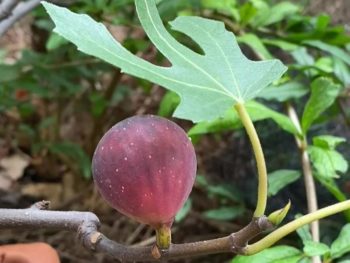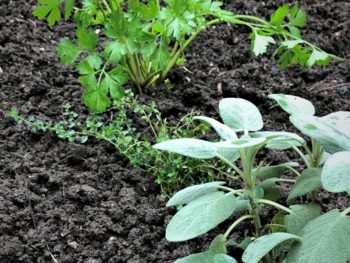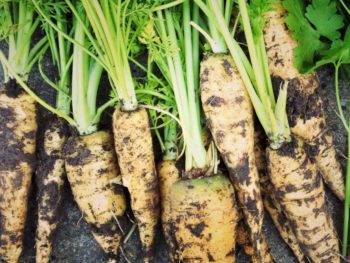 A Lenten Look at Trees features seven tree species, a sweeping journey from the Garden of Eden to palm’s Sunday prominence, preparing our hearts for the day Jesus hung on a tree. Some trees along the way may be well-suited for your garden; others may be more suitable the table, their fruits found easily in your grocers produce section. Either way, the symbolism and connections yield layers of hidden treasure in God’s Word.
A Lenten Look at Trees features seven tree species, a sweeping journey from the Garden of Eden to palm’s Sunday prominence, preparing our hearts for the day Jesus hung on a tree. Some trees along the way may be well-suited for your garden; others may be more suitable the table, their fruits found easily in your grocers produce section. Either way, the symbolism and connections yield layers of hidden treasure in God’s Word.
Oak Trees
Central to Lent is considering the magnitude of Christ’s crucifixion and resurrection, which has at its heart the matter of righteousness. Enter the oak tree. Oak trees in Scripture signify the Lord’s righteousness, beginning with Abram’s choosing to believe God, move to the land God promised him, and build an altar upon arriving there, at the “Oak of Moreh.”
This week offers an excerpt from God’s Word for Gardeners Bible to focus our thinking and deepen our appreciation of the oak trees in our landscape—likely common trees planted all around us! The great assortment of acorns in the feature photo was gathered from just a few streets neighboring our home. May the oaks we pass by every day or plant in our yards become mighty reminders of God’s righteousness and His work to unite us.
“Abraham’s Oak”
©2014 from God’s Word for Gardeners Bible
They will be called oaks of righteousness,
a planting of the Lord for the display of his splendor.
Isaiah 61:3 NIV
Read: Isaiah 61:1 – 3
Fertilize with: Genesis 12:6 – 7; Isaiah 6:13; Romans 4:13 – 25
Go out to the mightiest oak in your landscape. In the strength of its presence, under the protection of its canopy, the solid spread of its branches, its fortitude and permanence, sense the truth in Isaiah’s Word — righteousness — all set right. Spend a moment in the tree’s sturdy splendor. Imagine all things as they should be, set right.
God’s work of righteousness, setting all things right, is marked in Scripture with the oak tree. The tree’s traits reflect the story of God moving to restore the rightful relationship between God and people. The story begins with one man, Abram, choosing to believe God.
Matching all that we perceive of the oak tree is a linguistic connection in Hebrew: the same root word, El, is used for God and for oak, meaning “might,” strength,” “power.” When God told Abram he would be made into a great nation, Abram believed him. Not that he necessarily understood how, but Abram believed God had the power to do what he promised (Romans 4:21). So Abram went to Canaan, as God told him to do, and entered the land at Shechem. A great oak tree awaited his arrival, probably Quercus coccifera, the Palestine or Kermes Oak, (Hebrew, ‘allown or ‘elown). God repeated the promise, and Abram built an altar to the Lord (Genesis 12:6 – 7).
Splendor as Isaiah described it came in raising a whole nation of descendants from Abram, an old man with no children at the time of the promise (later God changed his name to Abraham); and even more powerful, in Abraham’s lineage to Christ Jesus (Matthew 1:2 – 16), who is our righteousness (Romans 4:24), the One who fulfilled Eden’s death sentence.
Abraham’s lineage to Christ touches on a second symbolism of the oak tree: its seed, the acorn. The oak genus, Quercus, classified in the Fagaceae family, includes over 450 species greatly varied in their characteristics, including both evergreen and deciduous trees, tree trunks — the “black oaks” and “white oaks” — as well as a variety of leaf forms.
Though there is confusion in identifying the oaks by branch, leaf or habit, one thing clearly designates members of Quercus: their seed, the acorn. Likewise, by one sign, Christ’s righteousness, our rightful relationship to God is restored.
There is neither Jew nor Greek, there is neither slave nor free man, there is neither male nor female; for you are all one in Christ Jesus. And if you belong to Christ, then you are Abraham’s descendants [seed], heirs according to promise.
Galatians 3:28-29 NASB
Photo Credits: ©2017 Shelley S. Cramm Oak species and cultivars and hybrids demonstrate great diversity, nevertheless all have in common the acorn. Pictured here are the varieties on our own little street: mossy oak, live oak, and red oak.
Abraham’s Oak rendering “snipped” from Google Books, Dictionary of the Holy Bible, William Wilberforce Rand, Editor, 1886 (click here for your free copy)
NIV denotes Scripture quotations taken from the Holy Bible, New International Version®, NIV®. Copyright © 1973, 1978, 1984, 2011 by Biblica, Inc.® Used by permission of Zondervan. All rights reserved worldwide. www.zondervan.com The “NIV” and “New International Version” are trademarks registered in the United States Patent and Trademark Office by Biblica, Inc.®
NASB denotes Scripture quotations taken from the NEW AMERICAN STANDARD BIBLE®, Copyright © 1960,1962,1963,1968,1971,1972,1973,1975,1977,1995 by The Lockman Foundation. Used by permission.














